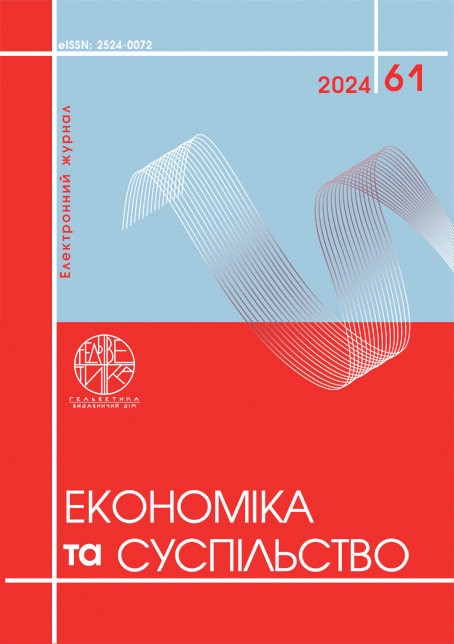FEATURES OF VENTURE BUSINESS DEVELOPMENT IN UKRAINE
Abstract
The purpose of the study is to characterize the features of the development of venture business in Ukraine. The characterizing features of the essence of venture business are identified. It has been established that it is the venture business that plays a decisive role in the hyper-fast-growing modern innovative economy. This form of business is not just an effective source of funding, but also a catalyst for growth, innovation and the implementation of visionary ideas. The essence of venture capital lies in its role in direct and financial investments that provide development of start-ups and small and medium-sized enterprises with strong growth potential. Unlike traditional sources of funding, venture capital is often willing to bear higher risks in an effort to generate significant investment returns through stakes in these companies. It has been proven that venture business contributes to the national economy, increasing its global competitiveness. By funding companies in cutting-edge sectors such as digital technology, biotechnology and clean energy, venture capital has been found to help secure a country's technological and innovation advantage on the international stage. The features of the impact of the COVID-19 pandemic on the development of venture business are characterized. The key features of the functioning of venture business under martial law are identified. Venture capital and business ventures have a significant impact on the economy, promoting innovation, supporting job creation and stimulating technological progress. Venture capital through the lens of investment is a key force in shaping national economies, stimulating innovation and stimulating economic growth. At its core is the ability to fund and support early-stage companies with the potential to disrupt industries, pioneer technologies and reimagine established markets.
References
Jurevičienė, D., & Martinkutė, A. (2013). Venture capital funds: theoretical aspects. Business: Theory and Practice, 14(2), 117-130. [in English]
Dias, E., & Lopes, D. S. (2014). Co-operation between large enterprises (LE’s) and SME’s: an approach to overcome the stage internationalization process. Business: Theory and Practice, 15(4), 316–327 [in English]
Deng, Q.Z., Liu, T. (2020). Research on comprehensive competitive evaluation of P2P network lending platforms based on BP neural network model. Review of Computer Engineering Studies, Vol. 7, No. 1, pp. 13-19. [in English]
Bilan, Y., Lyeonov, S., Lyulyov, O., Pimonenko, T. (2019). Brand management and macroeconomic stability of the country. Polish Journal of Management Studies, 19(2): 61–74. [in English]
Yan, M.-R. (2011). A fuzzy logic enhanced bargaining model for business pricing decision support in joint venture projects. Journal of Business Economics and Management, 12(2), 234–247. [in English]
Liu, Y., Zhang, H., Wu, Y., & Dong, Y. (2019). Ranking range based approach to MADM under incomplete context and its application in venture investment evaluation. Technological and Economic Development of Economy, 25(5), 877-899. [in English]
Cabrerizo, F. J., Al-Hmouz, R., Morfeq, A., Balamash, A. S., Martínez, M. A., & Herrera-Viedma, E. (2017). Soft consensus measures in group decision making using unbalanced fuzzy linguistic information. Soft Computing, 21(11), 3037–3050 [in English]
Cid-López, A., Hornos, M. J., Carrasco-Gónzález, R. A., & Herrera-Viedma, E. (2018). Prioritization of the launch of ICT products and services through linguistic multi-criteria decision-making. Technological and Economic Development of Economy, 24(3), 1231–1257 [in English]
de Almeida, A. T., de Almeida, J. A., Costa, A. P. C. S., & de Almeida-Filho, A. T. (2016). A new method for elicitation of criteria weights in additive models: Flexible and interactive tradeoff. European Journal of Operational Research, 250(1), 179–191 [in English]
Aggarwal, R., Kryscynski, D., & Singh, H. (2015). Evaluating venture technical competence in venture capitalist investment decisions. Management Science, 61(11), 2685–2706 [in English]

This work is licensed under a Creative Commons Attribution 4.0 International License.


